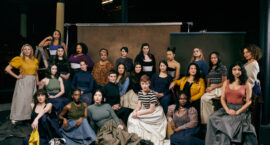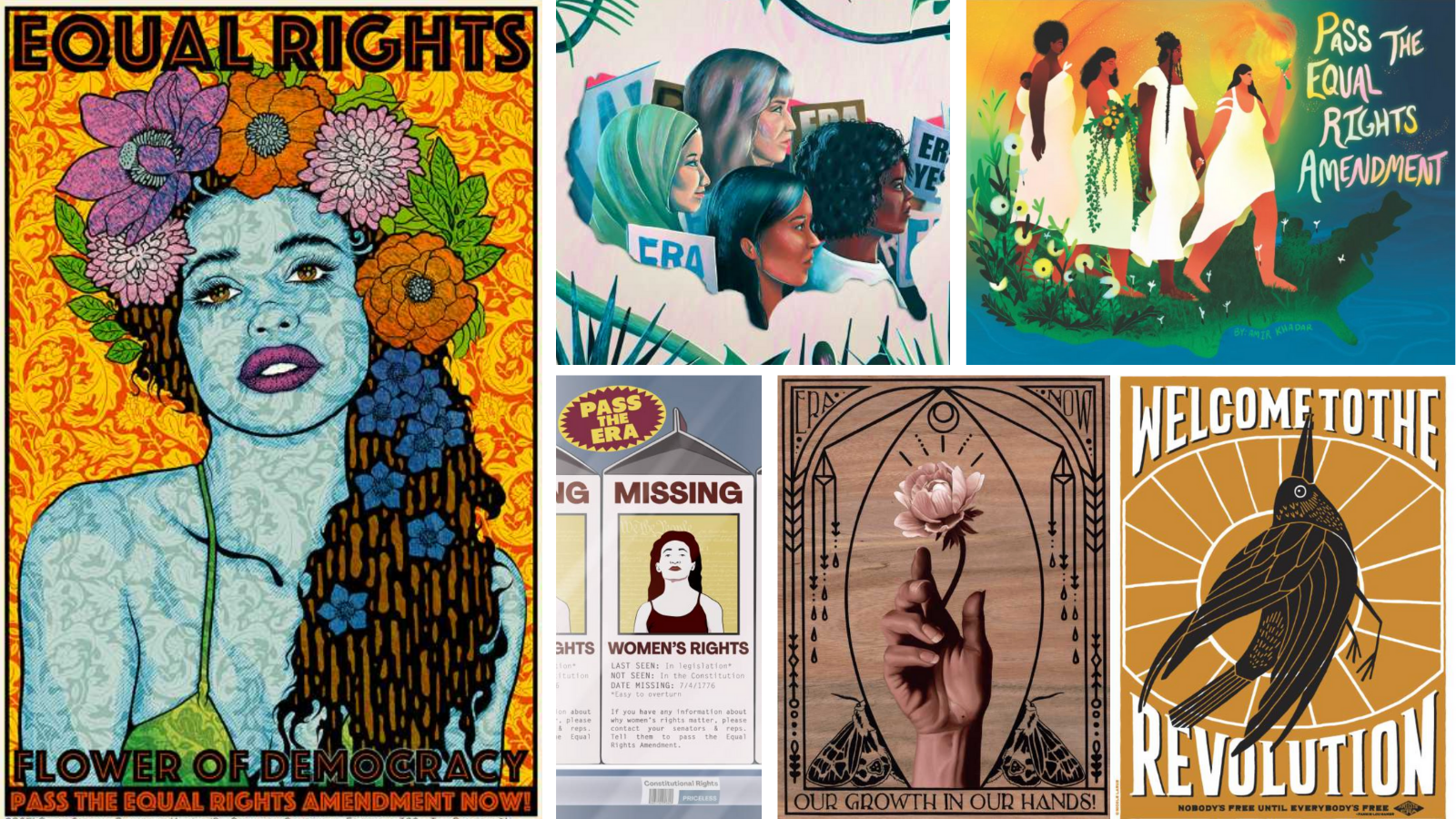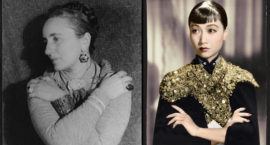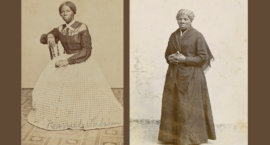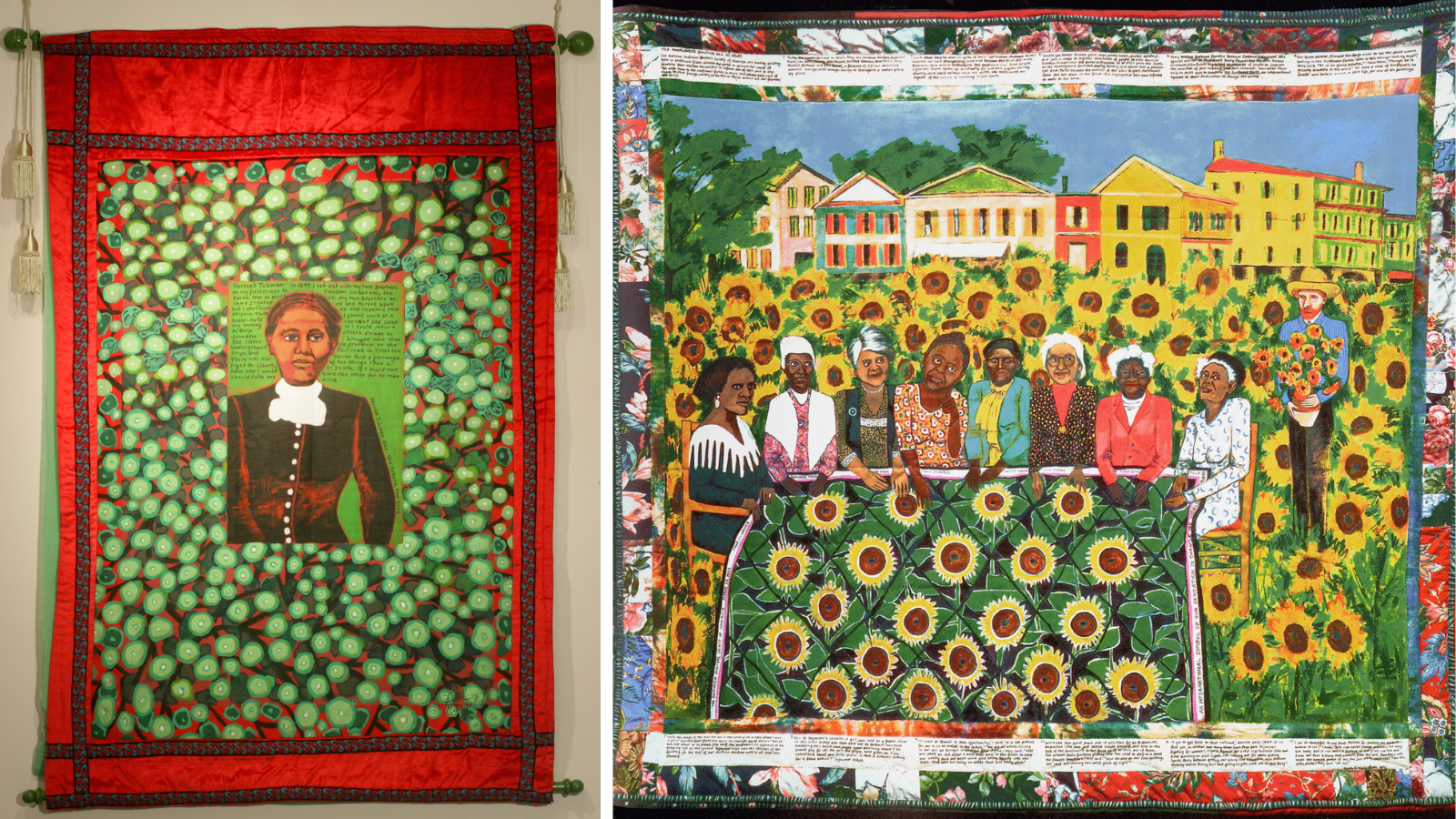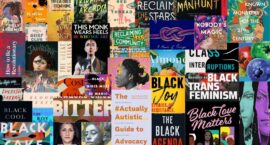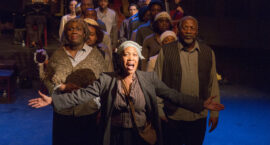Black women have historically played a crucial role in the origins of hip hop, but are often unacknowledged. Learning the rich herstory of hip hop feminism shows what an important role women have played in the past and the future of the genre.
Tag: Feminist Art
With a Powerhouse All-Women Cast, ‘Suffs’ Explores Activists Who Made Women’s Voting Rights Happen
Unlike the limited lessons of women’s suffrage many learn—Seneca Falls and Susan B. Anthony—Suffs digs deep into the gamesmanship wielded by the movement’s early 20th century leaders. Suffs opens April 6 at the venerable Public Theater in New York City. Lin-Manuel Miranda himself tweeted this week that >Suffs is “gobsmackingly incredible” and its writer and star, Shaina Taub as Alice Paul, is “the FUTURE.” I couldn’t agree more.
‘Artists 4 ERA’ Demand Equal Rights for All Americans: ‘It Is Overdue That Gender Equality Becomes the Law of the Land’
On International Women’s Day, VoteEquality launched the Artists 4 ERA initiative. In partnership with 28 prominent artists, including Shepard Fairey, Artists 4 ERA will be releasing limited edition, signed prints to benefit non-partisan, grassroots efforts for the Equal Rights Amendment. The full collection of artwork will make its debut at the launch event March 19 in Oakland, Calif. From there, the collection will tour the country at events organized by VoteEquality, partner organizations and artists advocating for gender equality.
“As gender rights are rolled back across the country and as the Supreme Court signals its willingness to forgo precedent, a new generation of activists is stepping up to the fight,” said Kati Hornung, executive director of VoteEquality. “Art as a form of expression has a unique way of motivating people.”
The Movie Star and Madame Salon: The Friendship of Anna May Wong and Bernardine Szold Fritz
In the mid-1930s, Anna May Wong was Hollywood’s preeminent Asian American starlet frustrated by a racist film industry. She connected with Bernardine Szold Fritz, a Jewish American writer and American salon hostess in Shanghai.
Today, 100 years after Anna May starred in her first leading role, The Toll of the Sea, stereotypes and casting white actors for Asian roles are still all too prevalent. Outside Hollywood, the U.S. is just beginning to recognize her groundbreaking achievements—Anna May Wong will be one of five American women to be featured on a U.S. quarter this year. It’s a start.
The Two Harriets
The iconic figure of Harriet Tubman supersedes the factual details of her life: There is the real Harriet Tubman and there is how she is remembered, which looms larger. In most of the surviving photographs of Tubman, we see her as a stoic freedom fighter and abolitionist. However, in 2017, a recently discovered photograph of her was auctioned at Swann Galleries, and it shows us a new side of Tubman: a younger, more feminine Tubman, dressed on trend for the 1860s. Perhaps this photo represents a more hopeful Harriet Tubman forging a life post-emancipation.
‘Picturing Black Girlhood’: A Praise Song for Black Girls
Never before have Black girls been so visible—the thought kept occuring to me as I explored the wonder that is “Picturing Black Girlhood: Moments of Possibility,” to date the largest exhibition on Black girls in the world. The expansive showcase of emerging and established photographers and filmmakers takes us on a journey into Black girls’ interior lives that simultaneously imagines a more capacious worlds for them.
The exhibition curated by photographers Scheherazade Tillet and Zoraida Lopez-Diago highlights the history of Black women photographers while also re-imagining this world for Black girls.
Harriet Tubman in the Art of Faith Ringgold
Faith Ringgold’s art on Harriet Tubman is an illustration of her capacity as an artist for taking somber stories and turning them into stories of triumph, victory and joy.
Faith (my mother) is a fabulist whose real interest is in projecting her ideas into the future. The older I get, the more I appreciate my mother’s art, in particular her insistence upon rendering the most apparently despairing circumstances of our histories as Black folk as opportunities for spiritual and magical transcendence.
February 2022 Reads for the Rest of Us
Each month, I provide Ms. readers with a list of new books being published by writers from historically excluded groups. The aims of these lists are threefold:
1. I want to do my part in the disruption of what has been the acceptable “norm” in the book world for far too long—white, cis, heterosexual, male;
2. I want to amplify amazing works by writers who are women, Black, Indigenous, Latinx, APIA/AAPI, international, LGBIA+, TGNC, queer, disabled, fat, immigrant, Muslim, neurodivergent, sex-positive or of other historically marginalized identities—you know, the rest of us; and
3. I want to challenge and encourage you all to buy, borrow and read them!
A Conversation with Music Composer Nkeiru Okoye of ‘Harriet Tubman’ Opera Fame
Dr. Nkeiru Okoye, whose first name means “the future is great,” has already dazzled the world as an internationally recognized music composer of opera, symphonic, choral, chamber, solo piano and vocal works. A 2021 Guggenheim fellow, Okoye is best known for her opera Harriet Tubman: When I Crossed that Line to Freedom, which premiered with The American Opera Project in 2014.
Rest in Power: Carol Christ, the Feminist Scholar Who Challenged the World of Religious Thought
Christian religion, with its traditional focus on a heaven after death, emphasizes the relief that comes from leaving behind physical reality. But according to Carol Christ, the body is the portal to religious experience.
On July 14, 2021, Carol Christ died of cancer in Heraklion, Crete. Rest in power.




